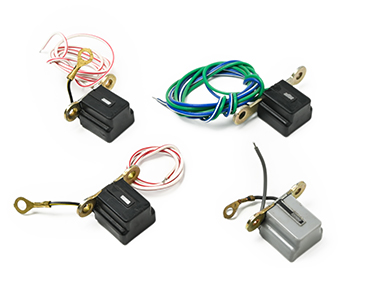
Pick Up Coils
Pick Up Coils


Pick-Up Coils are electromagnetic components used in a variety of applications to sense or detect the position of an object, generate a signal, or transfer energy. These coils are typically part of systems where electromagnetic induction is used to generate or sense electrical signals based on the movement of a magnetic field. Pick-up coils are commonly found in automotive, industrial, and electronic systems, particularly in applications such as ignition systems, sensors, and transformers.
Pick-up Coils are inductive sensors that detect the presence or position of a magnetic field. They are usually wound from copper wire around a core, and they generate an electrical signal when they interact with a changing magnetic field. The primary function of pick-up coils is to convert the mechanical movement or position of a magnetic element (like a rotor, gear, or magnet) into an electrical signal that can be processed by a control system or used to trigger further action in a system.
Working Principle
- The principle behind pick-up coils is electromagnetic induction. When a magnet or a ferromagnetic object moves near the coil, it induces a voltage in the coil due to the changing magnetic field.
- The induced voltage can then be measured and processed by an electronic system to determine the position, speed, or other characteristics of the moving object.
- AC (Alternating Current) or DC (Direct Current) is often used to energize the pick-up coils, and the signal generated depends on the nature of the magnetic field.
Types of Pick-Up Coils
- Magnetic Pick-Up Coils: These are used to detect the presence of a magnet or a rotating part with a magnet. When the magnetic field changes, the coil detects this change and generates an output signal.
- Inductive Pick-Up Coils: These detect the presence of metal objects. The coil generates a magnetic field, and when a metal object enters the field, it causes a change in the coil's inductance, which is then used to detect the object’s position.
- Hall Effect Pick-Up Coils: Hall-effect sensors use the Hall effect to detect the presence of a magnetic field. The pick-up coil includes a Hall-effect element, which generates a voltage when exposed to a magnetic field.
Applications of Pick-Up Coils
- Automotive Industry: Pick-up coils are widely used in automotive ignition systems. For instance, in a distributorless ignition system (DIS), a pick-up coil senses the rotation of the crankshaft or camshaft to trigger the ignition timing.
- Speed Sensors: Pick-up coils are used in speed sensors to measure rotational speed by detecting changes in magnetic fields as a rotor or gear turns.
- Proximity Sensors: Pick-up coils can be used in applications that require proximity detection, such as object detection in manufacturing lines or robotics.
- Position Sensors: In industrial machinery, pick-up coils can detect the position of moving parts, providing feedback to a control system.
- Electrical Meters and Gauges: Pick-up coils are used in meters that detect changes in current or voltage and convert them to readable signals.
- AC Motors and Generators: Used in alternators or generators to detect and generate a signal that corresponds to rotational motion.
- Magnetic Field Detectors: Pick-up coils can be used in systems that detect varying magnetic fields to monitor the status of electrical components or machinery.
Key Features and Benefits
- Non-Contact Sensing: Pick-up coils allow for non-contact detection of objects, reducing wear and tear that might be caused by physical contact.
- Accurate Signal Generation: These coils provide precise signals that can be used for speed control, position monitoring, or triggering actions in other components.
- Versatility: Pick-up coils can be used across a wide range of industries and applications due to their simple yet effective design.
- Compact and Durable: These coils are generally small in size, durable, and can operate in harsh environments, making them suitable for use in automotive and industrial systems.
